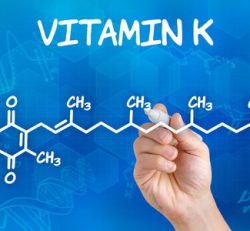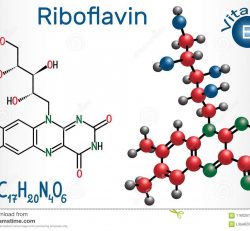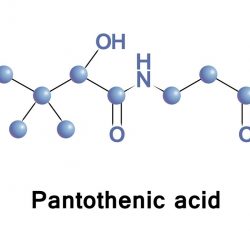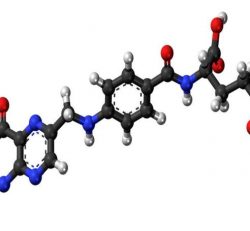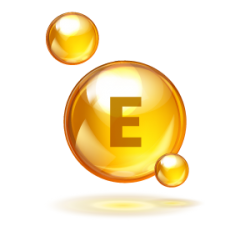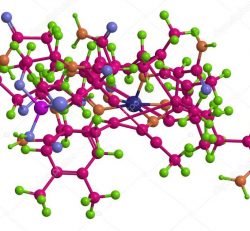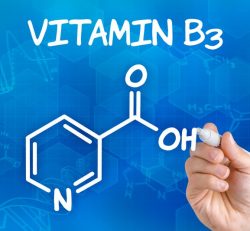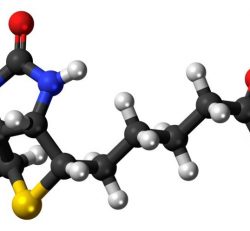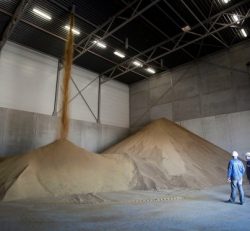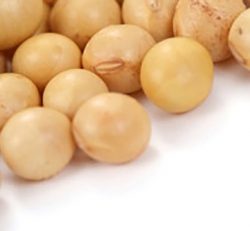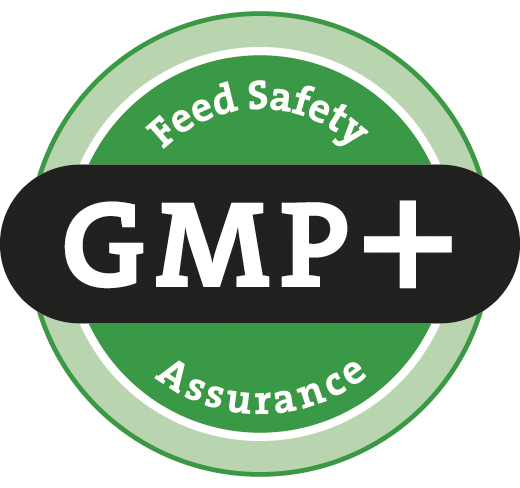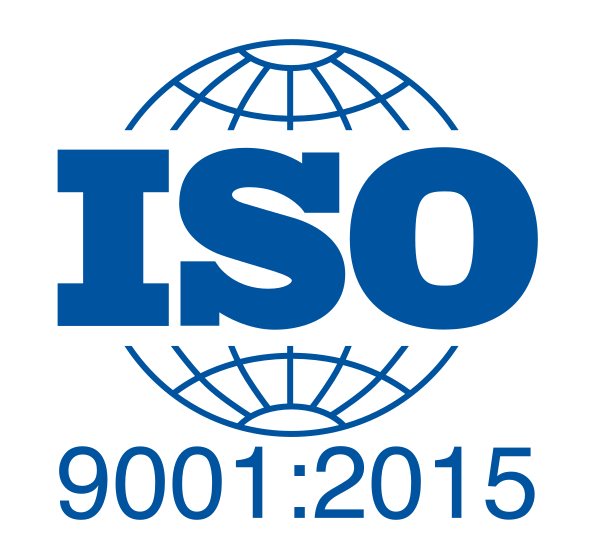RUMINANTS: DIFFERENT TARGETS, DIFFERENT NEEDS
The relationship between nutrition and reproduction is an important one for starters. Experiments have shown that adequately fed heifers show an earlier oestrus cycle than those with poor nutrition.
The differences between the 2 groups in the incidence of oestrus cycles were found to be:
- 128 days in the Friesian,
- 65 days in Jersey, and
- 100 days in the Ayrshire cows.
Impact on fertility in female animals
Other experiments showed that the level of nutrition also affects the age of sexual maturity of the females. In these experiments, one group of heifers was fed a poor diet and reached the puberty at 710.7 days of age, while another group was fed an adequate diet with proper protein-energy balance and reached puberty at 440.1 days. The level of mineral salts in the diet also affects the fertility of female animals. Phosphorus deficiency, for example, leads to delayed oestrus due to the low secretion of oestrogen, and may also lead to dystocia, which sometimes results in the death of the dam or the foetus. In most of such experiments, identical twins have been used to study the effect of nutrition on their fertility, given the similarity of these twins in terms of genetic make-up and the management factors, so that their differences fertility can only be attributed to nutrition.

Fertility of male animals
Nutrition has a clear effect on the fertility of male animals as well. A low plane of nutrition suppresses the production of gonadotropins by the pituitary gland and the secondary sex hormones so that atrophy of the prostate and seminal vesicles occur thereby affecting semen quality in terms of fluid volume and concentration. During the periods of nutritional stress, the animal body secretes the adrenocorticotropic hormone (ACTH), which in turn stimulates the secretion of glucocorticoids, which lowers the circulation or secretion of FSH and LH and hence inefficient spermatogenesis and poor semen quality. The size of the testis is also reduced if the animal is underfed. A change in testicular size can be achieved by a change in the level of roughage intake and supplementation of high-quality additives, with a resulting change in spermatogenetic activities of the testis. In one study, a 25% increase in the testicular size was associated with 81% increase in the efficiency of spermatogenesis.
Vitamins: Lack of A could delay sexual maturity in males
Vitamins also play an important role in the fertility of male animals. For example, Vitamin A deficiency, for example, lowers the spermatozoa concentration, semen storage capacity and also delayed sexual maturity and suppressed spermatogenesis in young bulls. The proportion of spermatozoa with morphological defects seemed to be greater in bulls with vitamin A deficiency. Vitamin E deficiency, on the other hand, increases the number of mountings needed for conception due to a reduced rate of cellular metabolism, degeneration of the germinal epithelium and testicular degeneration which, may lead to reduced spermatogenesis with a resulting poor semen output and quality. Much of these problems may be alleviated by feeding 4000 IU of vitamin E/head/day. In the case where male animals are fed cottonseed products at high levels and/or for long periods of time, the feeding of vitamin E will help neutralise the effect of gossypol as a potent male contraceptive.
Minerals: Lack of zinc affects sperm viability
Selenium deficiency affects the morphology and motility of the sperm and may be linked to the sub-fertility in many domestic animals. The sperm membranes are attacked by the increasing formation of oxygen reactive species which lower the viability and fertility of the sperm. Selenium increases the formation of anti-oxidant glutathione peroxide activity, which decreases the oxygen reactive species and hence increases sperm viability and fertility. It was reported that zinc is responsible for larger semen production as it is involved in the nucleic acid and protein metabolism for production of the sex hormones, including testosterone and GnRH. Zinc requirements for spermatogenesis are greater than that the requirements for body growth, so a deficiency may alter spermatogenesis and lead to a high proportion of abnormal sperms. Zinc deficiency may also lead to an increase in oxygen reactive species, which affect sperm viability.
Nutrition and milk production
The diets of lactating cows should be nutritionally balanced and contain the essential roughages that maintain the acid balance and microbial activity in the rumen in addition to their role as important determinants of the amount of milk produced and its basic components. The diet should also contain supplementary concentrate additives which meet the nutritional needs of milk production. The formulation of these supplements should be based on the physiological and productive status of the animal, and the quality of the feed material used in the total animal diet. Protein is considered to be one of the most important feed nutrient for dairy cows, and should not constitute less than 17% of the total animal diet. In selecting the protein sources in the diet, the biological value of protein is an important factor to be considered. This value varies according to the type of protein sources and has an effect on lactation (Table 1).
Table 1 – Protein source in dairy cattle diets and its effect on milkproduction.

Fat supplements are used to increase the energy density of diets and make enough energy available to the dairy animal for enhancing milk production. However, feeding additional fat is often accompanied by a decline in milk protein content. Therefore, fat feeding in dairy animal diets had limited applicability, where milk pricing gave an incentive to protein content. On an average, protein content in milk declined 0.3 percentage units for each kg of supplemental fat intake. It is proposed that fat supplements reduced milk protein concentration by reducing blood flow through the mammary gland causing reduced extraction of blood amino acids. However, supplementation of diets containing added fat with rumen-protected methionine and lysine alleviated the protein-depressing effect of fat.
Milk quality
Some feeds, such as silage, sometimes affect the taste and smell of milk due to the formation of some alcohols such as ethanol, mannitol, and others in the ensiled material during the fermentation process. The smell of these alcohols and their taste can be transmitted to the milk either by absorption directly from the digestive system, or when the cows breathe the eructated gases enriched with alcohols. In both cases, the silage alcohols reach the bloodstream, passing to the epithelial tissues lining of the mammary glands, and eventually reach the milk secreted by these tissues and affect its quality and flavour. In order to avoid this problem, it is recommended to have the silage fed to dairy cows at least two to four hours before the start of the milking process, thereby allowing sufficient time for the blood to get rid of the silage alcohols and hence eliminate their effects on the milk produced by silage-fed cows.

The milk yield and quality are also affected by feeding frequency. In one study, the daily milk yield was increased by 5-8% as the feeding frequency increased, and similar trends were noted in the component of milk (protein, lactose, and fat), with such an effect being more pronounced with milk fat. DM intake per live weight also increased as the feeding frequency increased and the requirement of CP and TDN for the production of kg milk (4% FCM) was decreased as the feeding frequency increased. The pH value of the feeding 2, 4 and 6 times was 5.56-6.40, 5.90-6.35 and 6.10-6.55, respectively, suggesting a low variation of pH value with increased feeding frequency. As the feeding frequency increased, the proportion of acetate-to-propionate in VFA was increased, and this may explain the increased fat content with frequent feeding since acetate is the main precursor of milk fat synthesis (Table 2).
Table 2 – Effects of feeding frequency on milk production, feedintake, feed requirements, and rumen fermentation parameters.
Feeding frequency (times/day)

Source:S. K. Yun and J. D. Han (1989)
Nutrition and immunity
Nutrition is a tool that can be used to help bolster the immune system to fight infection either by influencing cell phagocytic capacity, bactericidal activity, or both. The potential role of nutrition in support of immunity has been well established in humans and non-ruminant animal models but less is known about the nutritional regulation of immunity in ruminant livestock. It may, however, be assumed that nutrients at the tissue level will have similar effects on immunity in ruminants as in humans and non-ruminants. Among all nutrients, protein, vitamins (A and E), and minerals (selenium, zinc, and copper) have received the most attention as immune-stimulatory nutrients. Protein, vitamin A, and zinc all influence epithelial health and can impact physical defence barriers of the udder. Protein status will also influence the integrity of the smooth muscle teat sphincter. Quality and quantity of the keratin plug may be influenced by protein, zinc and vitamin A.
Vitamin E and selenium decreases mastitis
Cows supplemented with vitamin E at 740 mg/d during the dry period had a 37% lower incidence of mastitis after calving than control cows. The combination of vitamin E and selenium at 0.3 ppm in the total ration decreased the number of quarters that had clinical signs of mastitis by 41%. These results provide evidence for an interaction between vitamin E and selenium in controlling mastitis. A later study reported a 42% decrease in the incidence of mastitis at calving in heifers that were supplemented with vitamin E and selenium for 60 days prior to calving.

Copper lowers incidence and severity of mastitis
Supplementation of copper (as copper sulfate or copper proteinate) to heifers prepartum may also help decrease the incidence and severity of mastitis at calving. Heifers supplemented with 20 ppm copper prior to calving had more uninfected quarters after calving than heifers not supplemented with copper. Concentrations of other minerals such as zinc, manganese, and molybdenum should be monitored because of interactions between these minerals and copper. High concentrations of these elements in rations can prevent utilisation of copper. Supplementation of copper is also beneficial to calves. In one study, calves with adequate copper status were challenged with the IBR virus and Pasteurella hemolylica, and there was a rapid increase in plasma copper and serum ceruloplasmin that was not observed in calves with deficient copper status, which indicates an important function for copper in immune function. Not only can nutrition have a direct impact on immune function and susceptibility to mastitis, but it can indirectly increase cow susceptibility to mastitis through its impact on other diseases. Some nutrients can induce one or more metabolic diseases when either deficient or in excess in the transition diet. Milk fever, for example, has been shown to slow the closure of the teat sphincter thereby making the udder more prone to microbial invasion. Cows with milk fever are 8.1 times more likely to have mastitis and nine times more likely to have a coliform mastitis event as a result. Mastitis was also associated with ketosis and retained placenta, and fatty infiltration of the liver has been shown to be slower in clearing E. coli from the mammary gland of the cow. Much of these problems can be alleviated through adequate nutrition along with proper management strategies.
Wool production – protein
An adequate supply of protein in the diet of sheep is an important factor in wool growth. Low-protein diets often lead to a decline in wool growth, even with the excess supply of energy, probably due to changes in hormone secretions. Protein deficiency has been reported to cause an increase in the plasma levels of cortisol and the growth hormone and a reduction in the levels of thyroxine, which results in a decline in wool growth. In support of this view, the wool growth rate has been reduced during the administration of cortisol and growth hormone and stimulated with thyroxine.
Sulphur-containing amino acids
Although a supply of all constituent amino acids of a protein is required for wool synthesis, it is the supply of sulphur-containing amino acids (cysteine and of methionine) that usually limits wool growth. The extent of the response is, however, affected by the genetic potential for wool growth as well as the diet. With methionine, for example, the greater response was observed to abomasal infusions with sheep receiving a high-quality forage diet of lucerne chaff than with sheep receiving a low-quality forage diet of wheaten hay. The response may also vary depending on the protein source in the diet.
Whole proteins
Whole proteins such as casein or egg protein that contain a full complement of essential amino acids stimulate wool growth when given abomasally, but other proteins such as gelatin or zein have little effect or may depress wool growth even when supplemented with sulphur-containing amino acids.

Wool production – minerals
Suboptimal intakes of minerals such as selenium, sodium, potassium, fluorine, cobalt, and phosphorus are frequently accompanied by a reduced food intake and often by some impairment of digestion or metabolism in the rumen or body tissues. Under these circumstances, there is likely to be an associated reduction in wool growth through effects on substrate availability.
Zinc
Other minerals such as copper and zinc appear to have a specific effect on wool synthesis. Zinc is known to have a biochemical role in nucleic acid metabolism and protein synthesis, and this may underlie the effects of zinc deficiency on wool growth which include defects in the keratinization of hoof and horn and the occurrence of brittle wool lacking in crimp.
Copper
A deficiency in copper causes a lack of pigmentation in dark-fleeced animals which is thought to occur because of the role of copper in tyrosinase. Additionally, copper deficiency is associated with faulty keratinization of wool and lack of crimp. The effects of copper deficiency on wool growth is derived from impairment of the formation of disulphide linkages in keratin. A number of studies have shown that wool growth is reduced by copper deficiency occurring through either low copper intakes in the diet or reductions in the availability of dietary copper due to interactions with sulphur and molybdenum. Vitamins also play an important role in the wool production.
Folic acid essential for wool growth
The only direct demonstration of a vitamin deficiency affecting wool growth occurred in pre-ruminant lambs supplied with diets deficient in folic acid. The wool lacked crimp and in several cases, fibre growth ceased completely, despite the fact that the animals were gaining weight. Provision of folic acid alleviated the condition, supporting the notion that this vitamin is essential for wool growth.
While microbial synthesis of the B-group vitamins in the rumen means that adult ruminants are unlikely to suffer deficiencies of these vitamins, perturbations to rumen function may reduce microbial supply. The presence of ‘antivitamin’ compounds in feeds (e.g. anti-thiaminase in bracken fern) may also induce a deficiency. The fat-soluble vitamins A and D3 probably have direct effects on follicle function, as both have specific receptors in various parts of the follicle.
References are available from the author upon request.
Dr Salah Hamed Esmail
Independent freelance journalist
Source: www.dairyglobal.net


